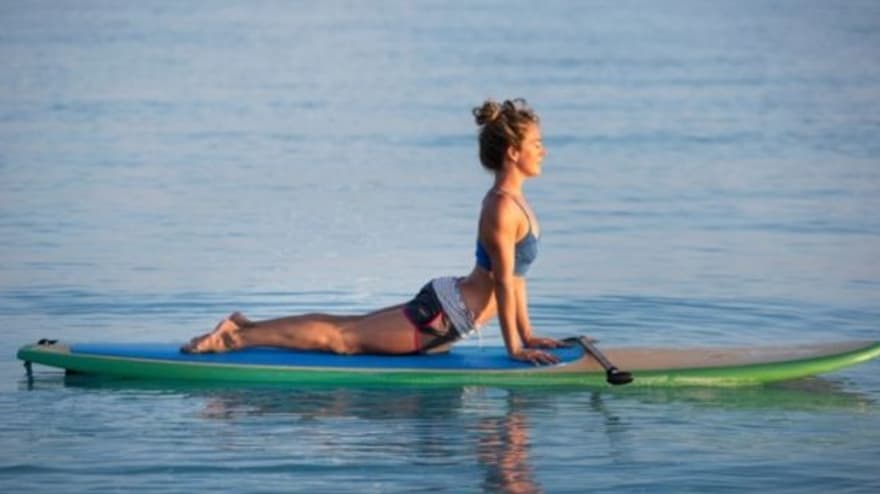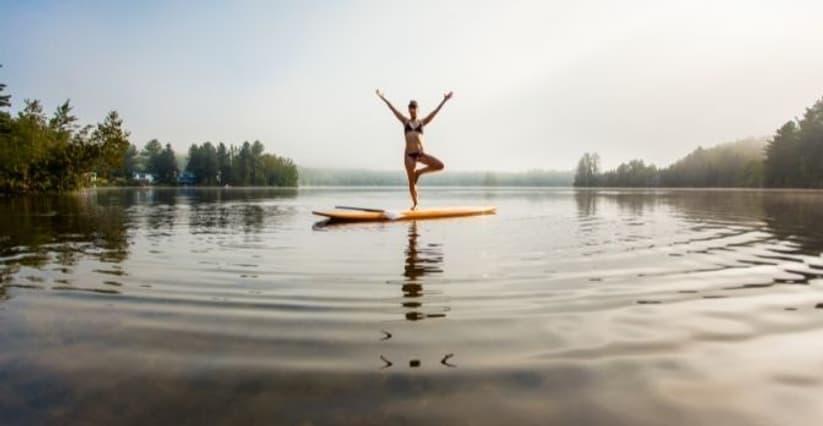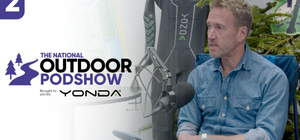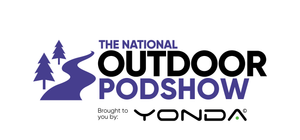27 June, 2022
Paddleboarding and SUP yoga are becoming more popular by the day.
But what is paddleboard yoga, you ask? Read on...

SUP yoga is simply yoga that is done on a paddleboard. It's a great way to improve your balance, increase your strength and flexibility, and have some fun!
In this article, we will discuss how to get started with paddleboard yoga as well as a few basic moves to try.
Well this one should be fairly obvious but you'll need a paddleboard. After that though, it will depend on a little bit of where you'll be practising (some swimming centres now offer SUP Yoga as part of their fitness activities) as if you're heading out onto open water, you'll definitely want your leash and paddle to help you back to shore when you finish your stretching. If in open water it's also recommended to wear a wetsuit to keep you warm should you fall in and a bouyancy aid to help you float if you do make a splash.
Now that we've got the kit sorted, let's move on to some of the exercises and moves to try.
Mountain pose is a great way to start your paddleboard yoga practice. It helps you to find your balance and centre yourself before starting the more challenging poses.
To get into mountain pose, stand on your paddleboard with your feet hip-width apart. Bring your palms together in front of your chest in prayer position.
Take a few deep breaths and feel your paddleboard grounding you as you find your balance. Although one of the simples poses to try, it is a great one to relax you and set you up for the next few asanas as well as help you find balance with your paddleboard.
Stay in this pose for as long as you like before moving on to the next one.
Once you've found your balance in mountain pose, it's time to try tree pose! This is a great way to improve your balance and paddleboarding skills.
To get into tree pose, start in mountain pose. Then, shift your weight onto one foot and bring the other foot up to rest on your ankle, calf, or thigh.
Bring your palms together in front of your chest in prayer position.
If you are finding balancing difficult on one leg, use the paddle to help support you and keep you upright by resting the blade on the board. Once balanced, slowly start to move the paddle away so that you become less reliant on leaning on the paddle.
Count how long you can hold this pose and review your progress every few weeks to see your progression and if you're getting stronger with each outing.

Warrior III is a great way to build strength and improve balance. It also happens to be one of the most challenging paddleboard yoga poses.
To get into warrior III, start in mountain pose. Then, shift your weight onto one foot and lift the other leg behind you.
Lean forward from your hips, keeping your back straight, until your body forms a straight line from your head to your toes.
A challenging pose because you're essentially doing a one legged handstand, paddleboard warrior III may be your first chance to fall in... but with some, you'll be nailing it in no time!
There you have it! A few basic paddleboard yoga moves to get you started. Remember to take things slowly at first and to listen to your body. If you feel like you're losing your balance, take a break, go for a paddle or try another pose. With a little practice, you'll be doing SUP Yoga like a pro in no time!
Paddleboard yoga is a great way to improve your balance, increase your strength and flexibility, and have some fun!
Want to get into more watersports?
Have a read at regular contributor Natasha's first go at kayaking here.

Outside & Active is the home for those who love the outdoors. Our mission is to inspire, inform and educate people about being active outdoors in a fun, safe and sustainable way. We provide inspiration, kit, tech and advice on adventure, camping, climbing, cycling, hiking, running water and winter.
Most recent articles by Outside & Active

Brooks supports trail runners to defy limits and empower their trail runs with the new Cascadia 18. The adaptable Cascadia combines DNA Loft v2 cushioning with TrailTack Green grip and a durable upper mesh to handle all terrains, providing necessary comfort and underfoot security on each surface.

Connectivity makes eBiking more customised, convenient and secure.

Various app solutions, interfaces and services as the next step for the eBike experience of tomorrow
Most recent articles in WATER
Wild swimming is a popular pastime but it can be tricky to know where to start gaining the knowledge and confidence to begin.

Did you miss out on attending this year's National Outdoor Expo? Or simply feeling the blues from the show and want even more EXCLUSIVE content? The National Outdoor PodShow is the one-stop-shop for those who love the outdoors.

National Outdoor PodShow sponsors YONDA are giving you the opportunity to win the ultimate swimmers bundle. Enter now!